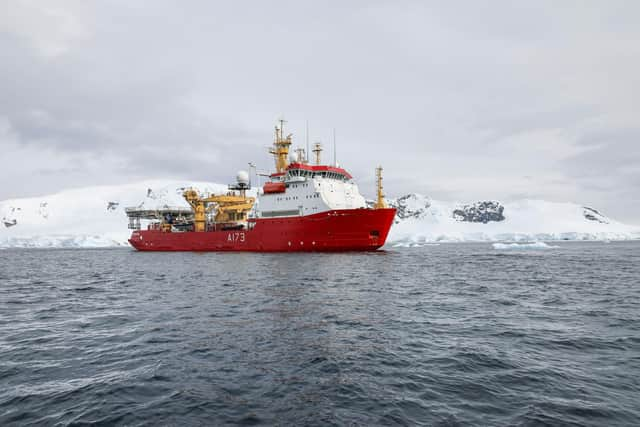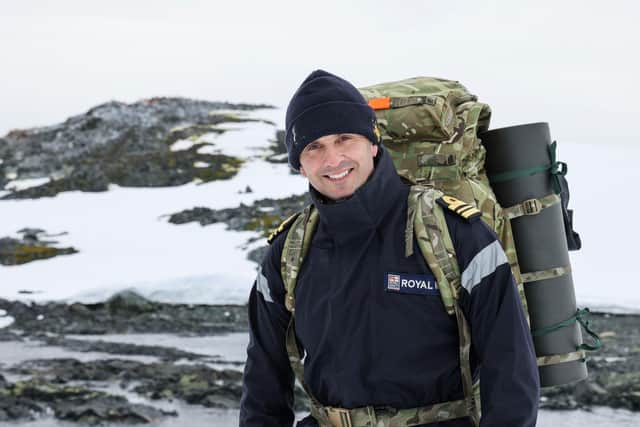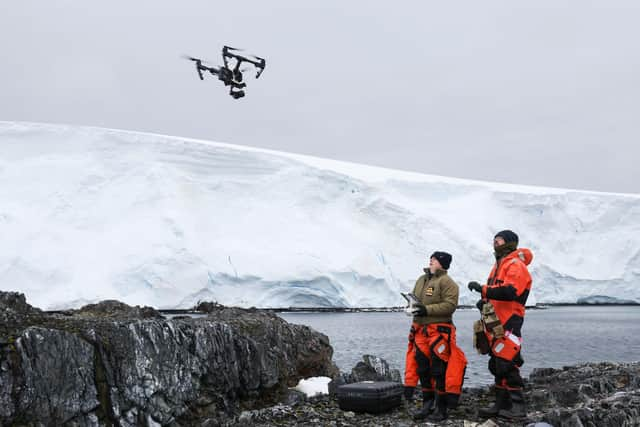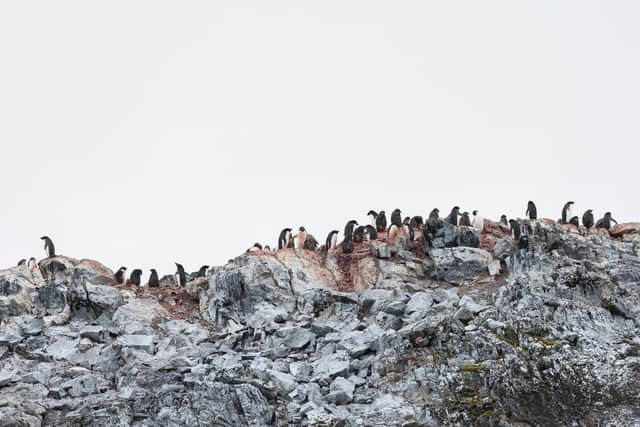Royal Navy officer aboard HMS Protector makes history by visiting islands with namesake and studying penguin populations in the Antarctic
and live on Freeview channel 276
Lieutenant Commander Dave Pitt is reported to be the first person bearing the name to land on the Pitt islands.
The officer and his shipmates spent the night there as HMS Protector conducts its second patrol of Antarctic waters this year.
Advertisement
Hide AdAdvertisement
Hide AdThe islands were discovered roughly 200 years ago and the archipelago is named after prime minister William Pitt – who held the post between the late 18th and early 19th century.


Lt Cdr Pitt said: ‘I cannot believe how privileged I am to be able to camp overnight in the Antarctic, on a group of islands with which I share a name, named in honour of a former British prime minister.
‘The whole 24 hour period was an amazing experience and one that I will remember for the rest of his life.
‘I wonder if I am the only ‘Pitt’ to have stayed on a Pitt Island.’


Advertisement
Hide AdAdvertisement
Hide AdLt Cdr Pitt, 46, from Dudley, joined the navy as a chef in 1991.
He’s spent much of his career in the Submarine Service, and HMS Protector is his first service ship in 25 years.
Now, he’s explored Antarctic islands bearing his name.
The Pitt islands are roughly 950 miles away from the Falklands and are estimated to be twice the size of Norwich.


Individual locations are named after characters from the Pickwick Papers, written by Portsmouth born author Charles Dickens.
Advertisement
Hide AdAdvertisement
Hide AdThe crew had to handle forbidding and cold temperatures during their mission near the barren islands.
Plymouth-based HMS Protector has paid a succession of goodwill visits to research stations during her second stint around the Antarctic peninsula.
These include the Brown (Argentinian), Videla (Chilean) and Vernadsky (Ukrainian) stations.


Under the 1959 Antarctic treaty, Britain is duty-bound to protect and conserve the region’s unique wildlife, preserve historic sites, manage tourism, work with scientists of all nationalities and gather data about the weather and climate.
Advertisement
Hide AdAdvertisement
Hide AdHMS Protector had to traverse ‘lively’ conditions while surveying the area last month.
The ice breaker has surveyed surveyed more than 400 square kilometres of waters surrounding the Antarctic Peninsula – approximately the size of the Isle of Wight.
Surveys were completed to update admiralty charts, which are used merchant seafarers and the Royal Navy, a task made harder by complicated terrain.
HMS Protector’s commanding officer, Captain Michael Wood, said: ‘With the increase in fishing and cruise ship activity, the ship has collected data that will contribute to the safety of navigation of shipping routes.
Advertisement
Hide AdAdvertisement
Hide Ad‘Surveying alone provides many obstacles, but doing it in Antarctica when surrounded by ice is the Premier League of hydrographic operations.
‘The challenges faced range from ice conditions, unfavourably strong winds and the constant management of maintaining the equipment in this harsh environment.’
A 12-person crew – including three cold weather survival specialists from the Royal Marines, Capt Wood, Lt Cdr Pitt and seven shipmates – landed on Jingle island to study a large population of Gentoo penguins.
HMS Protector and her survey motor boat James Caird IV analysed the waters around the island.
Advertisement
Hide AdAdvertisement
Hide AdThe contingent on the island set up camp, dined on Navy ration packs, and coped with plunging temperatures when the sun set.
Lt Cdr Pitt described the experience.
He said: ‘Overnight the winds picked up and along with the sounds of the buffering tents, nesting penguins and half a dozen fur seals, the surrounding noises were drowned out by snoring sailors and marines resting from an amazing day prior to embarking back in Protector.’
HMS Protector is currently on a five year mission to the southern hemisphere.
A message from the Editor, Mark Waldron
Subscribe here for unlimited access to all our coverage, including Pompey, for just 26p a day.
Comment Guidelines
National World encourages reader discussion on our stories. User feedback, insights and back-and-forth exchanges add a rich layer of context to reporting. Please review our Community Guidelines before commenting.
